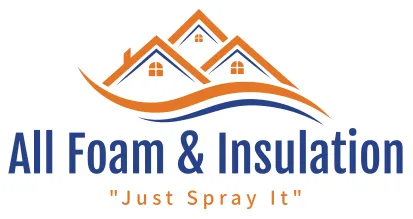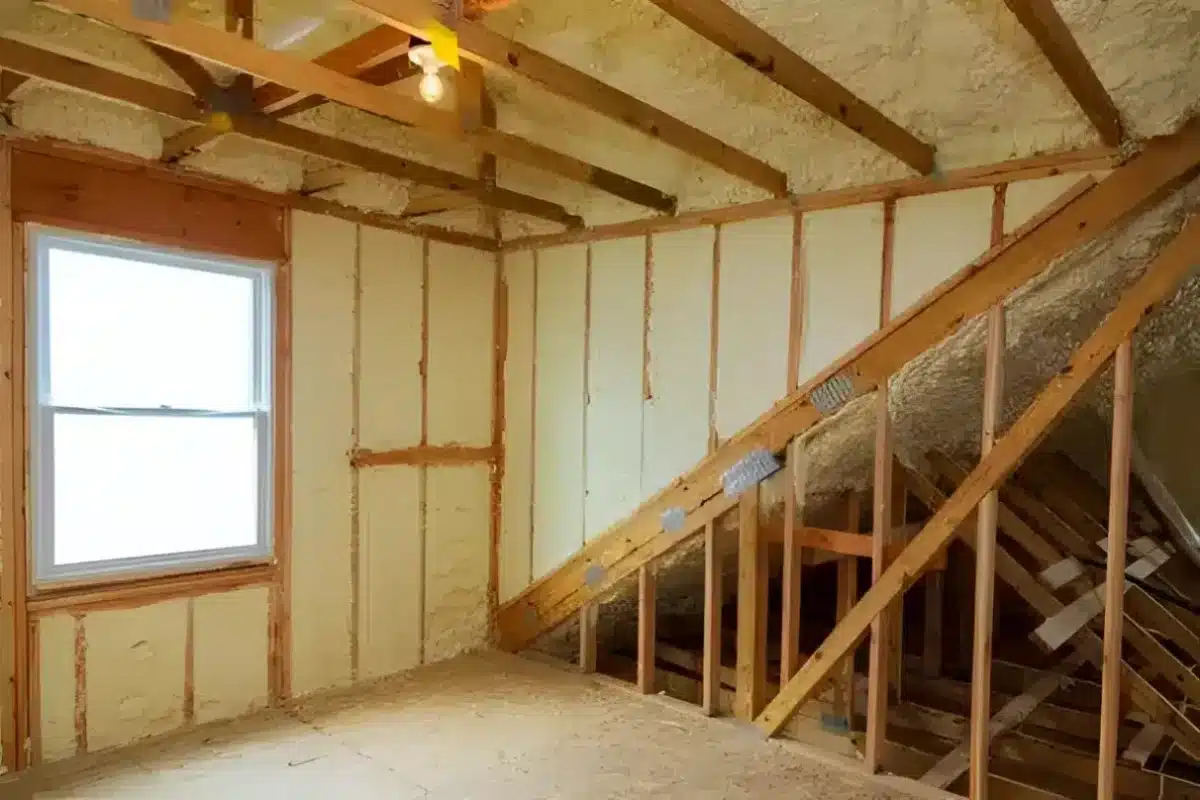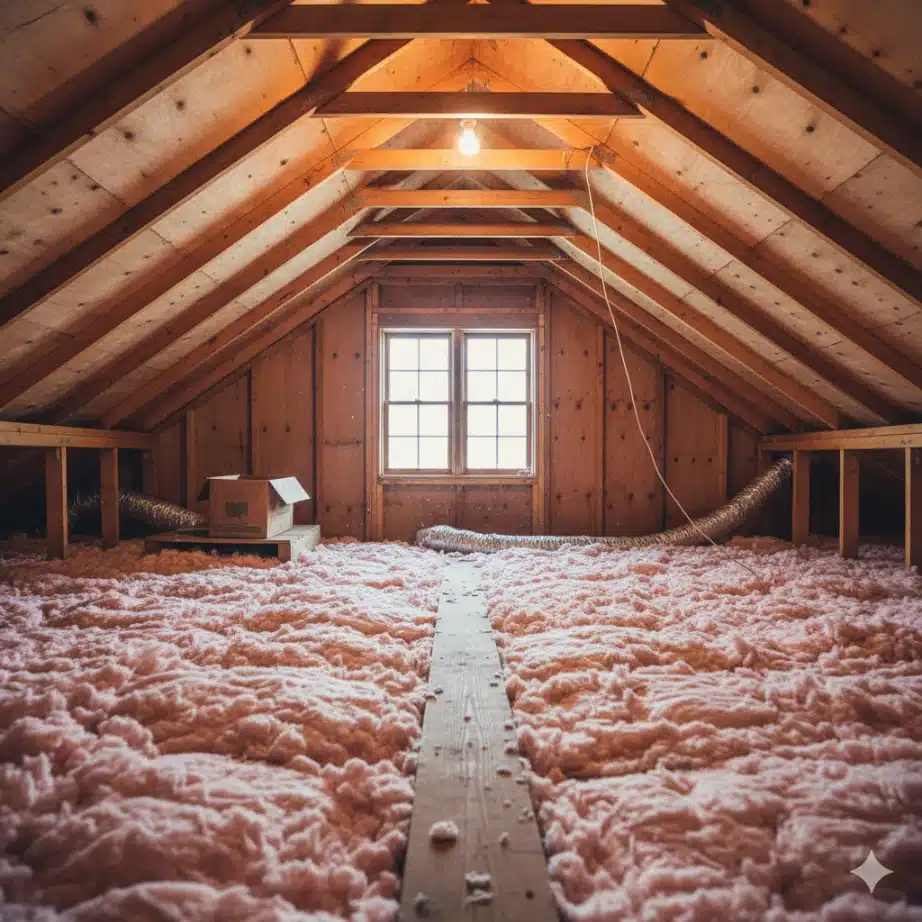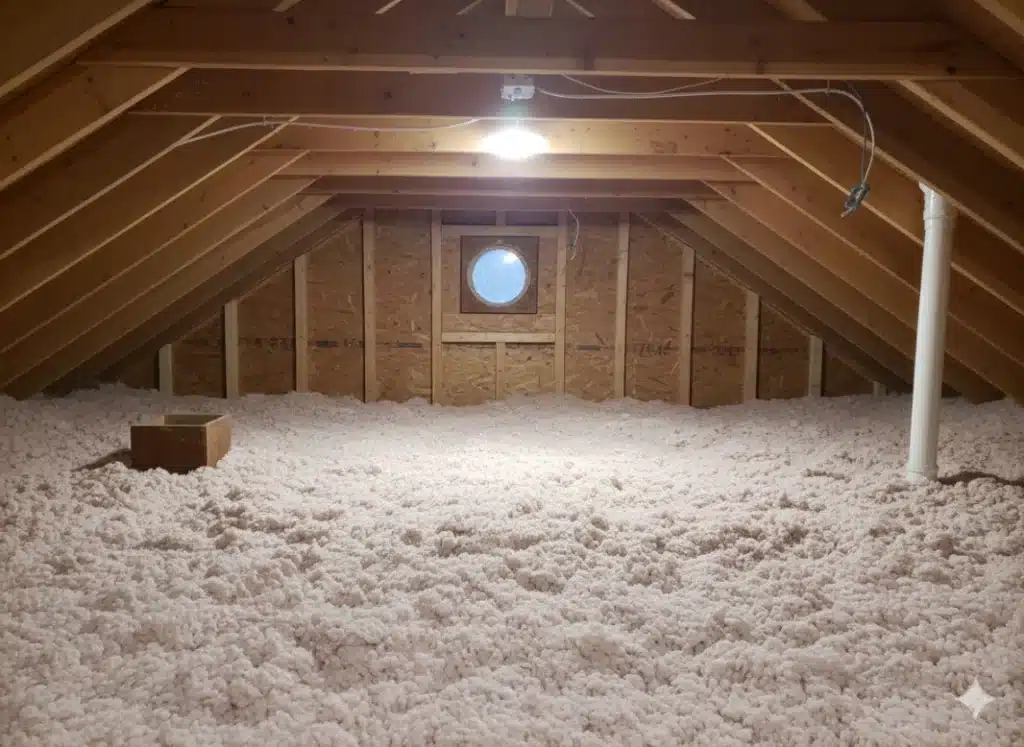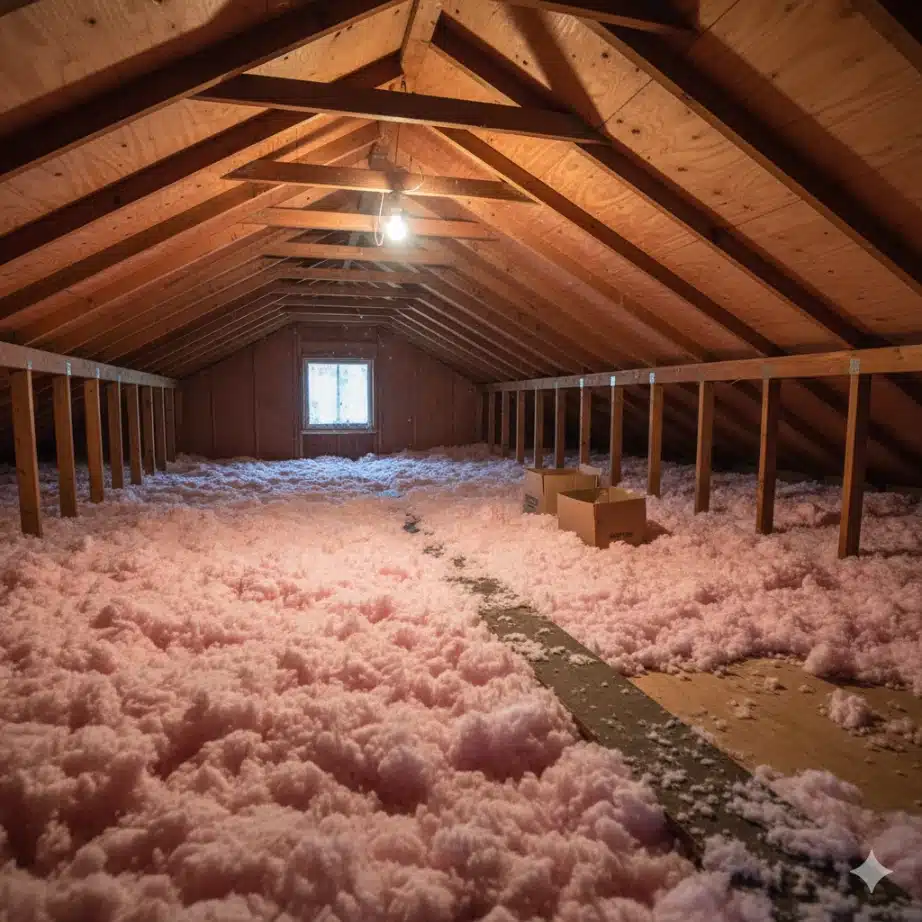Proper insulation protects your home from seasonal swings by resisting the flow of heat. In the winter, it keeps the heat generated by your furnace inside, and in the summer, it prevents the sun’s heat from getting in. This function creates a stable and comfortable indoor environment, regardless of the weather outside. By slowing heat transfer, insulation reduces the workload on your heating and cooling systems, which leads to lower energy bills and a more consistent temperature year-round.
This article explains the principles of insulation, how it functions during different seasons, and what factors to consider when choosing the right materials for your home. The information shared here is based on extensive field experience with how different insulation types perform in real-world conditions, from sweltering summer heat to freezing winter cold.
The Science of Insulation and Heat Flow
To understand how insulation works, it’s helpful to know how heat moves. Heat naturally flows from warmer areas to cooler ones through three primary mechanisms: conduction, convection, and radiation.
- Conduction: Heat travels through solid materials. This is like the handle of a hot pan getting warm.
- Convection: Heat moves through the circulation of liquids or gases, like hot air rising.
- Radiation: Heat travels in a straight line and heats anything solid in its path. It’s the warmth you feel from a distant fire.
Insulation materials are specifically designed to counter these processes. Materials like fiberglass, cellulose, and foam contain tiny pockets of trapped air. This trapped air is a poor conductor of heat, which significantly slows down both conduction and convection. Reflective insulation, on the other hand, uses shiny surfaces to block radiant heat. The effectiveness of an insulation material is measured by its R-value. A higher R-value indicates greater resistance to heat flow.
Managing Winter Cold with Effective Insulation
During the winter, your primary goal is to keep the expensive heat generated by your furnace from escaping. Without proper insulation, heat will quickly move through your ceilings, walls, and floors to the colder outside air. A well-insulated home creates a continuous thermal barrier that holds this warmth inside.
In colder climates, such as those found in the Pacific Northwest, higher R-values are essential. According to the U.S. Department of Energy, homes in this region may need R-49 to R-60 insulation in the attic and R-13 to R-21 in the walls to maintain efficiency. Inadequate insulation forces your heating system to run constantly just to keep up, leading to high energy consumption and uncomfortable cold spots.
Bonus Tip: Insulation is most effective when combined with air sealing. Before adding insulation, it’s a good practice to seal any cracks or gaps around windows, doors, pipes, and electrical outlets. This prevents drafts that can undermine the performance of your insulation.
Fighting Off Summer Heat
In the summer, the challenge is reversed. The sun beats down on your roof, heating your attic to extreme temperatures. This heat then radiates downward into your living spaces, making your home feel like an oven and forcing your air conditioner to work overtime.
Proper attic insulation acts as a shield, blocking this radiant heat from entering the main part of your house. Combined with adequate attic ventilation, it helps keep the attic space cooler, reducing the overall heat load on your home. This same principle applies to your walls. Insulation slows the transfer of heat from the hot exterior siding into your home’s interior, maintaining a cooler and more comfortable environment. Research from ENERGY STAR suggests that homeowners can save an average of 15% on heating and cooling costs by air sealing their homes and adding insulation in attics, floors, and crawl spaces.
A Look at Common Insulation Materials
Choosing the right insulation depends on your budget, climate, and the specific area of the house you are insulating. Each material offers a different balance of performance and cost.
| Material Type | Typical R-Value (per inch) | Advantages | Disadvantages |
|---|---|---|---|
| Fiberglass Batts | 3.1 – 4.3 | Inexpensive, widely available, easy for DIY installation. | Can lose R-value if compressed; can trap moisture. |
| Blown-In Cellulose | 3.2 – 3.8 | Fills irregular spaces well; made from recycled material. | Can settle over time, reducing effectiveness; can be dusty. |
| Open-Cell Spray Foam | 3.5 – 3.8 | Excellent air barrier; good sound dampening properties. | Lower R-value than closed-cell; permeable to moisture. |
| Closed-Cell Spray Foam | 6.0 – 7.0 | Highest R-value; acts as a vapor barrier; adds structural rigidity. | More expensive; requires professional installation. |
The performance characteristics of these materials are driving market trends. For instance, a report from Grand View Research projects significant growth in the spray foam insulation market, driven by its superior air-sealing and insulating capabilities.
Things to Consider Before Making a Decision
Before you invest in new insulation, think through a few key factors to ensure you make the best choice for your property.
Your Home’s Climate Zone
The amount of insulation you need is directly tied to where you live. The U.S. is divided into different climate zones, each with its own recommended R-values for different parts of a home. Consulting these guidelines helps you meet local building codes and achieve optimal energy efficiency.
Existing Insulation Condition
Inspect your current insulation. Is it settled, damaged by moisture, or full of pests? In some cases, you can add new insulation on top of the old. In others, particularly if there is mold or significant damage, the old material should be removed first.
Budget and Long-Term Value
While some insulation types have a higher upfront cost, they may offer better long-term savings on energy bills. Closed-cell spray foam, for example, costs more than fiberglass batts but provides a much higher R-value per inch and creates an air and moisture barrier, which can prevent other costly issues down the road.
Bonus Tip: To tie all these factors together, consider a professional energy audit. An audit can use tools like blower doors and infrared cameras to pinpoint exactly where your home is losing the most energy, allowing you to target your investment where it will have the greatest impact.
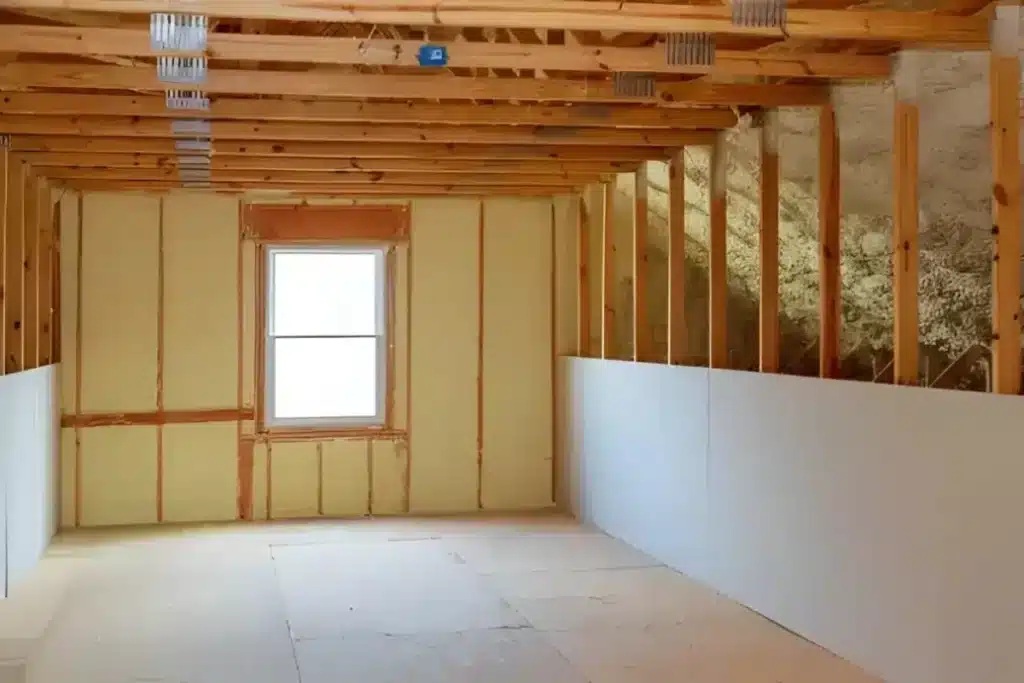
Frequently Asked Questions About Home Insulation
What is the most important area of a house to insulate?
The attic is almost always the top priority. Since heat rises, a significant amount of your home’s heat loss in the winter occurs through the roof. In the summer, the roof absorbs the most solar heat. Properly insulating your attic provides the biggest return on your investment in terms of both comfort and energy savings.
How does insulation help with noise reduction?
Many insulation materials have excellent sound-dampening qualities. Dense materials like cellulose and spray foam absorb sound waves, reducing the amount of noise that travels between rooms and from the outside. This can make a home feel much quieter and more peaceful.
Is spray foam insulation safe after installation?
Yes. When installed correctly by a certified professional, spray foam insulation is safe. The chemical compounds react and cure to form an inert, stable plastic. It’s important that the home is well-ventilated during and immediately after installation, and occupants should stay away for the manufacturer-recommended curing period, typically 24 hours.
Does my crawl space need insulation?
Insulating a crawl space is highly recommended, especially if it is vented. An uninsulated crawl space can make the floors above it cold in the winter and can be a source of moisture problems. Insulating the crawl space walls or the floor above it helps stabilize the home’s temperature and control humidity.
Final Thoughts
Proper insulation is a fundamental part of a high-performing home. It works year-round to keep you comfortable by resisting heat flow, which in turn lowers your energy consumption and saves you money. The right approach depends on your specific home, climate, and goals. Before moving forward, take the time to evaluate your home’s current state and consider which insulation materials best match your needs. For personalized guidance, consulting a professional can be a valuable next step.
Recently, our team announced the wider availability of professional spray foam insulation services designed to help homeowners achieve year-round comfort and energy savings. Read more about this update.
Get a Professional Assessment
For homeowners looking to understand their specific insulation needs, a professional evaluation is the best next step. To get clear answers and discuss which materials would be most effective for your home, you can contact All Foam & Insulation, LLC. The team is available to help at (541) 826-9600 or via email at [email protected].
Sources
- U.S. Department of Energy – Provides official recommendations for insulation R-values based on climate zones across the United States.
- ENERGY STAR – Offers data and guidance on the energy savings homeowners can achieve through air sealing and insulation projects.
- Grand View Research – A market research firm that provides analysis and forecasts for various industries, including the spray foam insulation market.

